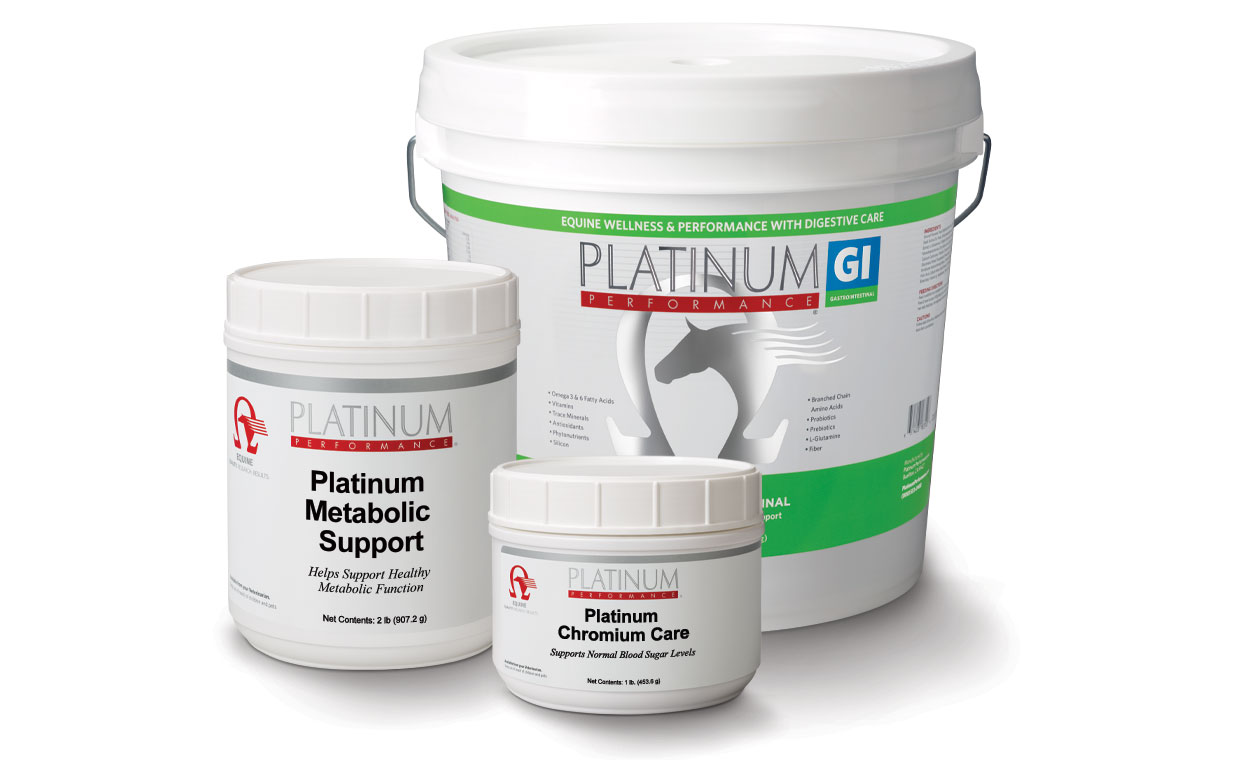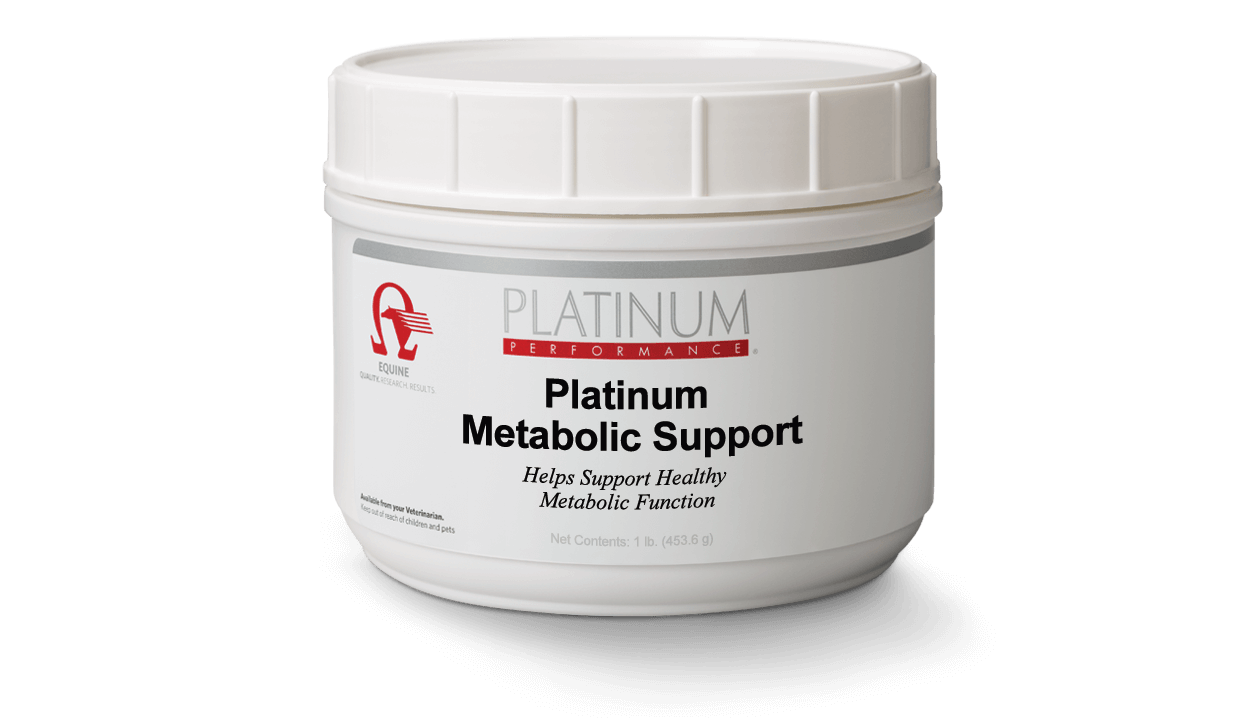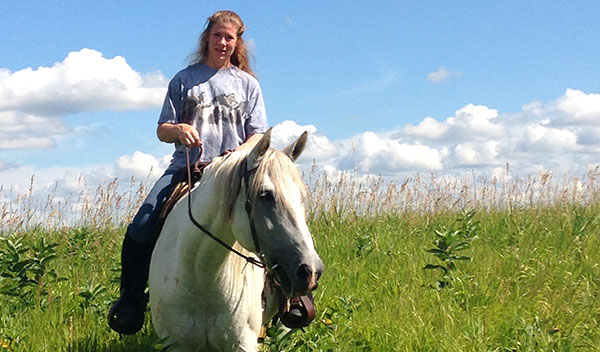
Healthy Metabolic Function
Metabolic conditions are on the rise, and over-conditioned or obese horses are at the center of many of these health concerns. Nutrition is a significant factor for a healthy weight and body condition and can be a powerful tool to support horses with metabolic issues. It is important to provide a balanced diet to help maintain normal healthy metabolic function in the horse. For advanced cases, chromium and magnesium can support healthy glucose tolerance and normal blood sugar levels.
Shop Formulas“Diet is one of the easiest things we can control when it comes to managing the health of the horse. This is where both veterinarians and horse owners can work together to either manage ongoing metabolic disease or, even better, prevent it.”
— Charlie Scoggin, DVM, MS, DACT, Rood & Riddle Equine Hospital
Formulas for Healthy Equine Metabolic Function
Platinum Performance® Equine was created out of clinical necessity as a comprehensive omega-3 formula to transform equine health at the cellular level. Because of its comprehensive nature, the ingredients work synergistically to support every aspect of health and performance, including joints, muscles, hooves, skin and coat, digestion and more.
Recommended daily dosage for a 1,000 lb horse is 2 scoops, which is 2 servings.
Platinum Performance® GI provides a gastrointestinal-focused approach to total horse health. Because an estimated 70-80 percent of the immune system lives in a horse’s digestive tract, gut health is not only important for proper digestion but also has far reaching implications on immune health and comprehensive wellness. This veterinary-developed formula provides omega-3 fatty acids, antioxidants, vitamins and trace minerals for total body health, along with Bio-Sponge®, prebiotics, probiotics and glutamine for advanced digestive support.
Recommended daily dosage for a 1,000 lb horse is 2 scoops, which is 2 servings.
More Details »

Avoid Overfeeding
A recent study showed that by supplementing with Platinum Performance® Equine, horse owners were able to decrease the amount of grain they fed, avoiding overfeeding empty calories.

Advanced Metabolic Support
Platinum Metabolic Support contains a combination of chromium and magnesium to support:
- Healthy glucose tolerance
- Normal blood sugar levels
- Metabolism of carbohydrates, proteins, and fats
You May Also Enjoy
These Articles From Platinum Magazine


Sugar Rush: The Rise in Equine Metabolic Conditions
Veterinarians are seeing an up-tick in metabolic-related issues; Luckily most are treatable and largely preventable
Read More
Laminitis in Horses
How skilled veterinarians and farriers are propelling the prevention and treatment of laminitis forward for the horse.
Read MoreEasily Monitor a Horse's Body Condition Score
Learning how to body condition score can help you keep track of your horse’s progress towards a healthy weight.
Learn More
1 - POOR
Extremely emaciated. Backbone, ribs, tailhead, hip joints, and lower pelvic bones project prominently; bone in withers, shoulders and neck are easily noticed. No fatty tissue can be felt.

2 - VERY THIN
Emaciated. Slight fat covers vertebrae. Ribs, tailhead, hip joints and lower pelvic bones are prominent. Withers, shoulders and neck structure faintly discernable.

3 - THIN
Fat buildup about halfway on backbone. Slight fat covers ribs that are easily discernible. Tailhead prominent but individual vertebrae cannot be identified visually. Hip joints appear rounded but easily discernable. Withers, shoulders and neck accentuated.

4 - MODERATELY THIN
Slight ridge along back. Faint outline of ribs discernable. Tailhead prominence depends on conformation, but fat can be felt around it. Hip joints not discernable. Withers, shoulders and neck not obviously thin.
Too Thin

5 - MODERATE
Back is flat; ribs easily felt, but not visually distinguishable. Fat around tailhead feels a bit spongy. Withers round over spinous processes; shoulders and neck blend smoothly into body.
Ideal

6 - MODERATELY FLESHY
May have slight crease down back. Fat over ribs spongy; fat around tailhead soft. Small fat deposits behind shoulders and along sides of neck and withers.

7 - FLESHY
Might have slight crease down back. Individual ribs can be felt, but noticeable filling between ribs with fat. Fat around tailhead soft; fat deposited along withers, behind shoulders and along neck.

8 - FAT
Crease down back. Difficult to feel ribs. Fat around tailhead very soft; area along withers filled with fat. Area behind shoulder filled with fat, noticeable thickening of neck. Fat deposited along inner thighs.

9 - EXTREMELY FAT
Obvious crease down back. Patchy fat appears over ribs. Bulging fat around tailhead, along withers, behind shoulders and along neck. Fat along inner thighs may rub together. Flank filled with fat.
Obese
Too Thin
Ideal
Obese
Real Clients. Real Results.

Woody
Platinum Performance® client since 2021
“My vet recommended your wellness supplement and the Metabolic Support for my daughter’s POA, Woody, who has metabolic health concerns. I saw immediate positive effects in his coat, and after changing his grain to a no-carb formula, he started losing weight quickly. The 2 supplements helped him process what he was eating. After seeing the positive effects in Woody, I started giving the Platinum Performance Equine to my senior Arabian and he looks so much better too. Thank you Platinum!”
— Lee Ann C.

Romeo
Platinum Performance® client since 2013
“When Romeo had a bout with laminitis, it was a pretty severe case. He had to be penned up for almost a year but recovered. Along with major changes in his diet, our vet suggested Metabolic Support to help promote normal blood glucose levels. I believe it is largely due to this supplement that we’ve been able to maintain his metabolism, and Romey is able to enjoy an hour or two of pasture grazing per day.”
— De V.





